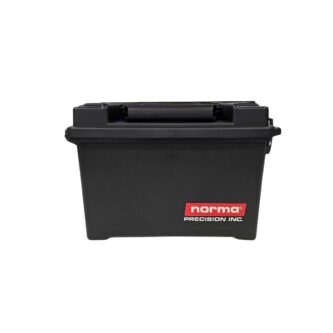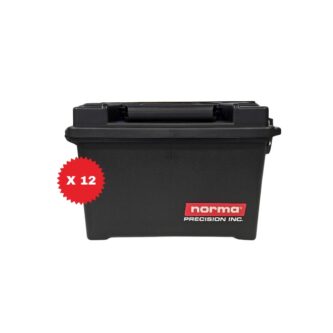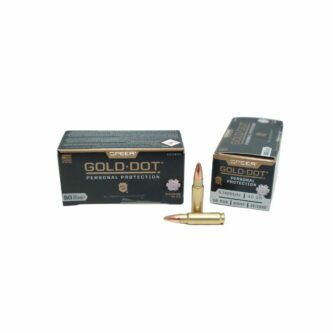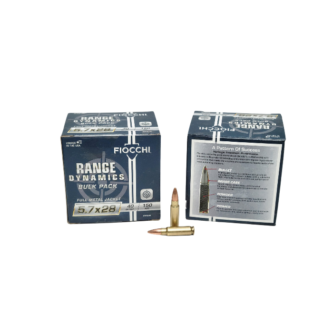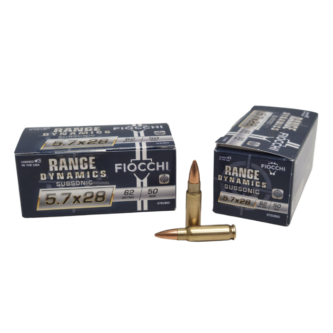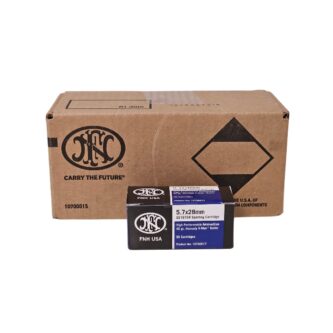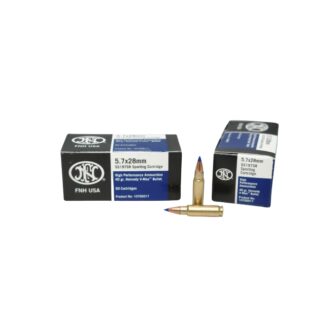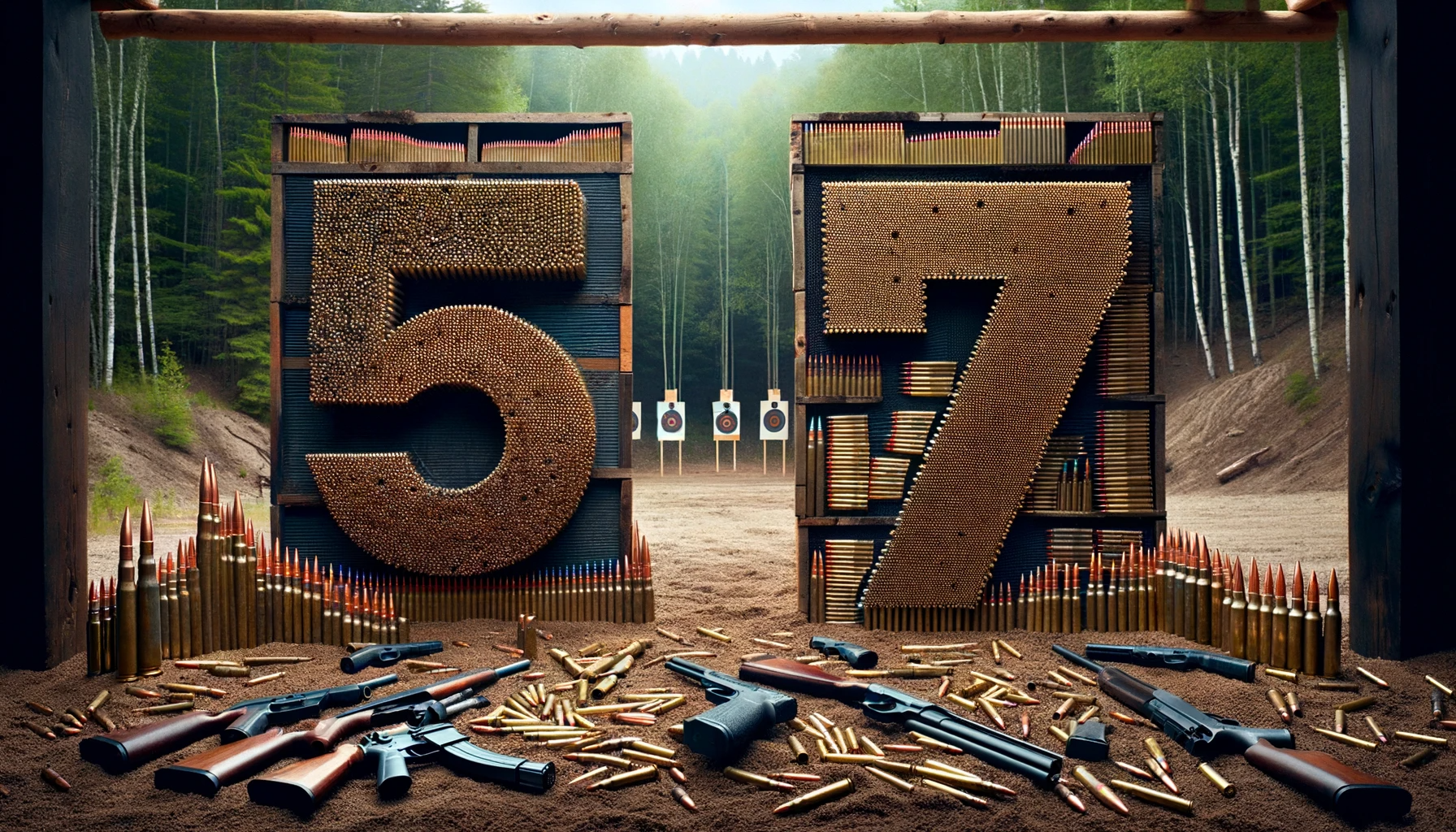When it comes to firearms and ammunition, few calibers have traversed the journey from specialized military use to widespread civilian popularity quite like the FN 5.7×28mm. Developed in the late 1980s by the Belgian arms manufacturer FN Herstal, this cartridge was originally designed to meet NATO’s requirements for a lightweight, high-velocity round for both personal defense weapons (PDWs) and sidearms. Its initial purpose was clear: to penetrate body armor in military and law enforcement scenarios, offering a tactical edge in close-quarters combat.
Fast forward to the present, and the 5.7×28mm has transcended its original role on the battlefield. It has captured the interest of civilian shooters, carving out a new identity in the realms of self-defense and home protection. This growing popularity among everyday gun enthusiasts can be attributed to the cartridge’s unique characteristics — notably its low recoil, high velocity, and impressive accuracy. These features make it not only an intriguing option for target shooting and recreational use but also a compelling choice for personal and home defense.
As we delve deeper into the 5.7×28mm’s journey from tactical operations to civilian hands, we’ll explore how this once niche cartridge has become a respected and sought-after option for those seeking a reliable and effective means of protection.
Shop 5.7×28 (Five-seven) Ammo
5.7×28mm vs. 9mm: A Comparative Analysis
It is necessary to discuss the 5.7 vs 9mm because the 9mm is typically most recognized as being the standard for self defense. The 5.7×28mm and the 9mm Parabellum cartridges are comparable in many ways. Both have their unique characteristics and loyal followings, yet they serve slightly different purposes. Here’s a closer look at how these two cartridges stack up against each other in various aspects.
Ballistic Performance:
- Velocity and Energy: The 5.7×28mm is known for its high velocity, typically exceeding 2,000 feet per second, which contributes to its flat trajectory and ability to penetrate body armor (supposedly up to 200 meters). The 9mm, while slower, offers more kinetic energy at close range, making it effective in personal defense situations.
- Trajectory and Accuracy: The high velocity of the 5.7×28mm results in a flatter trajectory over longer distances, potentially offering greater accuracy, especially at ranges beyond typical self-defense scenarios. The 9mm, with its heavier bullet, has a more pronounced drop but is highly accurate at typical engagement distances. The superior trajectory of the 5.7mm significantly outperforms the 9mm. When zeroed at 50 yards, at a distance of 200 yards, the drop for a 9mm round is around 30 inches, in stark contrast to the 5.7x28mm, which experiences a mere 2.5-inch drop. These figures are based on tests from a P90 PDW and PCC. Although 200 yards might appear to be a stretch for both calibers, FN asserts that the 5.7 maintains its effectiveness even at that extended range.
Recoil and Handling:
- Recoil: One of the notable advantages of the 5.7×28mm is its low recoil, which enhances shooter comfort and facilitates quicker follow-up shots. The 9mm, especially in lighter firearms, can have a more noticeable recoil, though it’s still manageable for most shooters.
- Handling: Firearms chambered in 5.7×28mm are often praised for their ease of handling, partly due to the cartridge’s small size and light weight. In contrast, 9mm firearms, particularly compact models, are known for their versatility and ease of concealment.
Ammunition Capacity and Size:
- Capacity: The smaller size of the 5.7×28mm allows for higher-capacity magazines without significantly increasing the size of the firearm. This contrasts with the 9mm, where magazine capacity can be limited, especially in compact models.
- Size: The 5.7×28mm’s smaller dimensions also contribute to lighter and more compact ammunition, which can be a logistical advantage in terms of carrying and storage.
Applications and Suitability:
- Self-Defense: Both cartridges are effective for self-defense, with the 9mm being one of the most popular choices due to its stopping power and widespread availability. The 5.7×28mm offers an alternative for those looking for higher velocity and penetration, particularly against armored threats.
- Law Enforcement and Military Use: The 5.7×28mm was initially designed for military and law enforcement use, offering armor-piercing capabilities. The 9mm, meanwhile, has been a staple in law enforcement due to its reliability and effectiveness.
Unique Characteristics of the 5.7×28mm:
The FN 5.7×28mm cartridge has garnered significant interest from civilian shooters, thanks in large part to its unique set of characteristics that make it stand out from more traditional ammunition options. Here’s a look at some of the key features that contribute to its growing popularity.
High Velocity:
- One of the most notable attributes of the 5.7×28mm is its high velocity. Capable of exceeding 2,000 feet per second, this speed not only enhances its flat trajectory but also contributes to its ability to effectively penetrate targets. This high velocity ensures that the bullet retains sufficient kinetic energy over longer distances.
Low Recoil:
- The 5.7×28mm is renowned for its low recoil, which is a significant advantage for shooters of all skill levels. Lower recoil results in less muzzle rise and enables shooters to maintain better control during rapid firing. This is particularly beneficial for less experienced shooters or those who are more sensitive to the kickback of higher-caliber rounds.
Lightweight Ammunition:
- The cartridges are lightweight, making them easy to carry in larger quantities, whether for extended shooting sessions or for personal defense purposes. This reduced weight does not come at the cost of performance, making the 5.7×28mm a versatile option for various applications.
Accuracy and Precision:
- The combination of high velocity and low recoil inherently contributes to the overall accuracy of the 5.7×28mm. Shooters can achieve precise shot placement more easily, which is crucial in both target shooting and self-defense scenarios.
- The cartridge’s design facilitates a flatter trajectory over distance, reducing the need for extensive adjustments for bullet drop, which can be a significant advantage in long-range shooting situations.
Ease of Use:
- The 5.7×28mm’s characteristics collectively contribute to its ease of use. The manageable recoil, combined with high accuracy, makes it an appealing choice for a broad range of shooters, including those who may not have extensive experience with firearms.
- Its compatibility with lightweight, ergonomic firearms designed for this caliber further enhances its user-friendliness, making it an accessible option for everyday shooters.
The FN 5.7×28mm stands out in the civilian shooting market due to its high velocity, low recoil, lightweight nature, and resulting accuracy. These attributes not only make it a practical choice for various shooting disciplines but also an enjoyable round for a diverse group of firearms enthusiasts.
The 5.7×28mm (Five-seveN) in Self-Defense Scenarios:
In the context of self-defense, the selection of ammunition is a critical decision, balancing the need for effective stopping power against the risks, particularly in home defense scenarios. The 5.7×28mm cartridge presents an interesting option in this regard, offering a blend of attributes that cater to the unique demands of self-defense.
Effectiveness in Self-Defense:
- The high velocity of the 5.7×28mm means that the round has significant energy upon impact. This energy is crucial in self-defense situations, where stopping a threat effectively and swiftly is the primary goal.
- Despite its small size, the 5.7×28mm has earned a reputation for its penetration capability. This is especially relevant against targets that may be wearing heavy clothing or in scenarios where a barrier penetration might be necessary.
Balancing Stopping Power and Over-Penetration Risk:
- One of the perennial challenges in self-defense ammunition is finding the balance between stopping power and minimizing the risk of over-penetration. Over-penetration in a home defense scenario can pose significant risks to bystanders or other unintended targets.
- The 5.7×28mm offers a balance in this aspect. While it has the velocity and energy to stop a threat, its small-caliber size can reduce the risk of over-penetration compared to larger, heavier rounds.
Considerations for Home Defense:
- In home defense, where engagement distances are typically short, the 5.7×28mm’s high velocity and flat trajectory are less critical than in long-range shooting. However, these features can contribute to its overall effectiveness by providing a margin of error in stressful and dynamic situations.
- The low recoil of the 5.7×28mm is a significant advantage in self-defense scenarios, particularly for shooters who need to maintain control for potential follow-up shots or when under duress.
Ammunition Selection:
- The choice of specific 5.7×28mm ammunition can further tailor its suitability for self-defense. Hollow-point or expanding bullets, for instance, can enhance the round’s stopping power while mitigating risks associated with over-penetration.
- It’s important for users to understand the specific characteristics of their chosen self-defense ammunition, including how it behaves upon impact and its potential effects in indoor environments.
The 5.7×28mm cartridge presents a viable option for self-defense, offering a combination of stopping power and control that can be advantageous in critical situations. Its unique characteristics warrant consideration by those looking for an effective self-defense round, particularly in scenarios where over-penetration and user control are primary concerns.
Ammunition Types for the 5.7×28mm Caliber
The 5.7×28mm caliber is known for its versatility, and this is reflected in the variety of ammunition types produced for it. Each type serves a specific purpose, from training and target practice to tactical applications. Here’s an overview of the current ammunition types available for the 5.7×28mm caliber:
SS190 Ball:
- The SS190 Duty Round is considered the standard cartridge for the 5.7×28mm. Featuring a full metal jacket design with a steel penetrator in the core, the SS190 is designed to offer good penetration capabilities against body armor. It’s the quintessential round for general-purpose use and is favored for its balance of performance and reliability.
L191 Tracer:
- The L191 is a tracer round, easily identifiable by its red tip. It provides the same ballistic performance as the SS190 but with the added functionality of a visible trace for shot tracking and signaling. This is particularly useful in low-light conditions, allowing shooters to correct aim during sustained fire.
Sb193 Subsonic:
- The Sb193 is a subsonic round, designed to be quieter when fired, particularly through a suppressed weapon. It features a heavier bullet that does not break the sound barrier, thereby reducing the sonic “crack” that high-velocity rounds produce. This is ideal for stealth operations and situations where noise discipline is crucial.
SS192 Soft Core:
- The SS192 was an earlier variant that featured a jacketed hollow point (JHP) design. The soft-core lead allowed for expansion upon impact, increasing the round’s lethality without the need for a steel penetrator. While no longer in production, its design influenced later versions and remains a point of interest among enthusiasts.
FR199 Frangible:
- The FR199 is a frangible round, designed to disintegrate upon impact with hard targets, minimizing the risk of ricochet and back-splash. This makes the FR199 an excellent choice for close-quarters combat training, particularly in environments where bullet ricochet is a concern.
Each of these 5.7×28mm ammunition types offers unique benefits for different scenarios, from tactical engagements to training exercises. Users of the 5.7×28mm caliber have the advantage of selecting from these specialized rounds to best match their specific needs, whether for defense, tactical applications, or target practice.
Get a Great Deal on 5.7×28
The intricate details and compelling attributes of the 5.7×28mm caliber underscore its rising adoption among civilian shooters for self and home defense. The caliber’s high velocity, low recoil, and innovative firearm options, like the FN Five-seven and Ruger-57, position it as a formidable choice for those seeking a modern defensive tool. The assortment of specialized ammunition types, from the standard SS190 Ball to the FR199 Frangible, further showcases the versatility and adaptability of the 5.7×28mm to various shooting needs and preferences. However, with great power comes great responsibility. The decision to use the 5.7×28mm for personal defense brings with it the necessity for responsible gun ownership. This includes a commitment to proper training, an understanding of the legalities surrounding its use, and a thorough knowledge of the ammunition’s capabilities and limitations. It is through such informed and conscientious practices that the 5.7×28mm can be most effectively and safely utilized as a defense caliber.
Check out KIR’s 5.7×28 Ammo and get a great deal on a bulk ammo purchase. We would love to answer any questions you have about this unique round. Give us a call or shoot us an e-mail if you need specific recommendations on the best ammo for your situation. Keep in mind we have fast shipping on ammo, great customer service as proven by hundreds of 5-star reviews, and some of the best deals for online ammunition! We’d love to hear from you and appreciate your support of a family-owned, second amendment supporting company – KIR Ammo.
FAQ About 5.7×28 Ammunition and Caliber
Q: What is a 5.7 pistol good for?
A: A 5.7 pistol is excellent for self-defense, recreational shooting, and even small game hunting due to its high velocity, accuracy, and low recoil, which make it easier to handle and shoot accurately.
Q: What guns shoot 5.7x28mm?
A: The most well-known guns that shoot the 5.7x28mm are the FN Five-seven pistol and the FN P90 personal defense weapon. Ruger also manufactures the Ruger-57, another popular pistol chambered for this round.
Q: What is a 5.7 pistol?
A: A 5.7 pistol refers to a handgun chambered for the 5.7x28mm cartridge, known for its high-velocity, flat-shooting, and relatively low-recoil characteristics.
Q: Who makes 5.7 pistols?
A: The 5.7 pistol is most famously made by FN Herstal, with their FN Five-seven model. Ruger has also entered the market with the Ruger-57.
Q: Is 5.7 more powerful than 9mm?
A: The 5.7 is generally not more powerful in terms of kinetic energy but has a higher velocity and can offer greater penetration capabilities, especially with specific types of ammunition designed to defeat body armor.
Q: Can you legally own an FN Five-seven?
A: Yes, you can legally own an FN Five-seven in most of the United States, though specific laws and restrictions can vary by state and locality.
Q: Does NATO use 5.7x28mm?
A: The 5.7x28mm was developed in response to a NATO request for a new small-caliber, high-velocity firearm cartridge. It has been used by military and law enforcement organizations within NATO, but it is not the standard NATO cartridge like the 9x19mm.
Q: Is 5.7 ammo illegal?
A: No, 5.7 ammo is not illegal. However, certain types of 5.7 ammunition that are classified as armor-piercing may be restricted for civilian use.
Q: What do blue tip 5.7 bullets do?
A: Blue tip 5.7 bullets typically indicate a training round or an incendiary round, depending on the manufacturer. These are designed for specific uses, such as target practice or demonstrating incendiary effects on targets.
Q: Will 5.7 penetrate body armor?
A: Certain types of 5.7x28mm ammunition are capable of penetrating soft body armor, especially those rounds specifically designed for that purpose, like the SS190 duty round. However, legality and availability of these rounds for civilian use are subject to regulations.
